Cian Ryan
Autobiasing Event Cameras
Nov 01, 2024



Abstract:This paper presents an autonomous method to address challenges arising from severe lighting conditions in machine vision applications that use event cameras. To manage these conditions, the research explores the built in potential of these cameras to adjust pixel functionality, named bias settings. As cars are driven at various times and locations, shifts in lighting conditions are unavoidable. Consequently, this paper utilizes the neuromorphic YOLO-based face tracking module of a driver monitoring system as the event-based application to study. The proposed method uses numerical metrics to continuously monitor the performance of the event-based application in real-time. When the application malfunctions, the system detects this through a drop in the metrics and automatically adjusts the event cameras bias values. The Nelder-Mead simplex algorithm is employed to optimize this adjustment, with finetuning continuing until performance returns to a satisfactory level. The advantage of bias optimization lies in its ability to handle conditions such as flickering or darkness without requiring additional hardware or software. To demonstrate the capabilities of the proposed system, it was tested under conditions where detecting human faces with default bias values was impossible. These severe conditions were simulated using dim ambient light and various flickering frequencies. Following the automatic and dynamic process of bias modification, the metrics for face detection significantly improved under all conditions. Autobiasing resulted in an increase in the YOLO confidence indicators by more than 33 percent for object detection and 37 percent for face detection highlighting the effectiveness of the proposed method.
Neuromorphic Seatbelt State Detection for In-Cabin Monitoring with Event Cameras
Aug 15, 2023Abstract:Neuromorphic vision sensors, or event cameras, differ from conventional cameras in that they do not capture images at a specified rate. Instead, they asynchronously log local brightness changes at each pixel. As a result, event cameras only record changes in a given scene, and do so with very high temporal resolution, high dynamic range, and low power requirements. Recent research has demonstrated how these characteristics make event cameras extremely practical sensors in driver monitoring systems (DMS), enabling the tracking of high-speed eye motion and blinks. This research provides a proof of concept to expand event-based DMS techniques to include seatbelt state detection. Using an event simulator, a dataset of 108,691 synthetic neuromorphic frames of car occupants was generated from a near-infrared (NIR) dataset, and split into training, validation, and test sets for a seatbelt state detection algorithm based on a recurrent convolutional neural network (CNN). In addition, a smaller set of real event data was collected and reserved for testing. In a binary classification task, the fastened/unfastened frames were identified with an F1 score of 0.989 and 0.944 on the simulated and real test sets respectively. When the problem extended to also classify the action of fastening/unfastening the seatbelt, respective F1 scores of 0.964 and 0.846 were achieved.
* 4 pages, 3 figures, IMVIP 2023
Neuromorphic Sensing for Yawn Detection in Driver Drowsiness
May 04, 2023Abstract:Driver monitoring systems (DMS) are a key component of vehicular safety and essential for the transition from semiautonomous to fully autonomous driving. A key task for DMS is to ascertain the cognitive state of a driver and to determine their level of tiredness. Neuromorphic vision systems, based on event camera technology, provide advanced sensing of facial characteristics, in particular the behavior of a driver's eyes. This research explores the potential to extend neuromorphic sensing techniques to analyze the entire facial region, detecting yawning behaviors that give a complimentary indicator of tiredness. A neuromorphic dataset is constructed from 952 video clips (481 yawns, 471 not-yawns) captured with an RGB color camera, with 37 subjects. A total of 95200 neuromorphic image frames are generated from this video data using a video-to-event converter. From these data 21 subjects were selected to provide a training dataset, 8 subjects were used for validation data, and the remaining 8 subjects were reserved for an "unseen" test dataset. An additional 12300 frames were generated from event simulations of a public dataset to test against other methods. A CNN with self-attention and a recurrent head was designed, trained, and tested with these data. Respective precision and recall scores of 95.9 percent and 94.7 percent were achieved on our test set, and 89.9 percent and 91 percent on the simulated public test set, demonstrating the feasibility to add yawn detection as a sensing component of a neuromorphic DMS.
Control and Evaluation of Event Cameras Output Sharpness via Bias
Oct 25, 2022Abstract:Event cameras also known as neuromorphic sensors are relatively a new technology with some privilege over the RGB cameras. The most important one is their difference in capturing the light changes in the environment, each pixel changes independently from the others when it captures a change in the environment light. To increase the users degree of freedom in controlling the output of these cameras, such as changing the sensitivity of the sensor to light changes, controlling the number of generated events and other similar operations, the camera manufacturers usually introduce some tools to make sensor level changes in camera settings. The contribution of this research is to examine and document the effects of changing the sensor settings on the sharpness as an indicator of quality of the generated stream of event data. To have a qualitative understanding this stream of event is converted to frames, then the average image gradient magnitude as an index of the number of edges and accordingly sharpness is calculated for these frames. Five different bias settings are explained and the effect of their change in the event output is surveyed and analyzed. In addition, the operation of the event camera sensing array is explained with an analogue circuit model and the functions of the bias foundations are linked with this model.
Recurrent Super-Resolution Method for Enhancing Low Quality Thermal Facial Data
Sep 21, 2022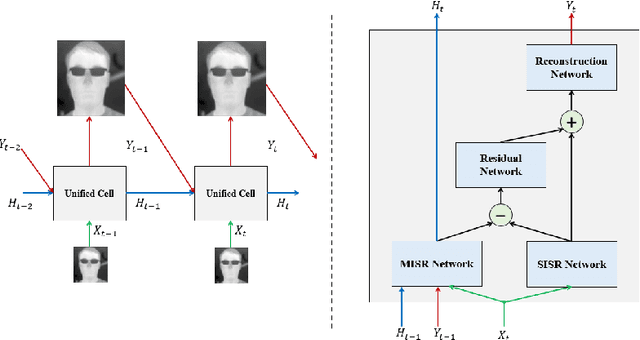

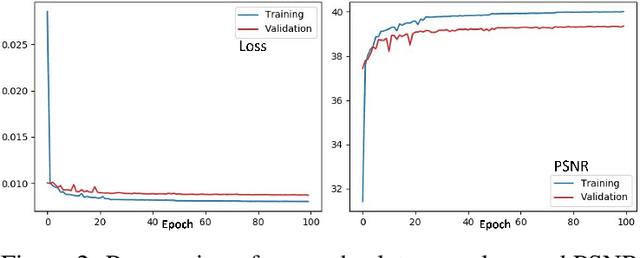
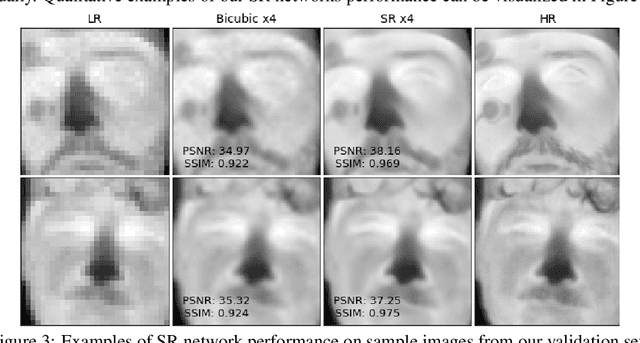
Abstract:The process of obtaining high-resolution images from single or multiple low-resolution images of the same scene is of great interest for real-world image and signal processing applications. This study is about exploring the potential usage of deep learning based image super-resolution algorithms on thermal data for producing high quality thermal imaging results for in-cabin vehicular driver monitoring systems. In this work we have proposed and developed a novel multi-image super-resolution recurrent neural network to enhance the resolution and improve the quality of low-resolution thermal imaging data captured from uncooled thermal cameras. The end-to-end fully convolutional neural network is trained from scratch on newly acquired thermal data of 30 different subjects in indoor environmental conditions. The effectiveness of the thermally tuned super-resolution network is validated quantitatively as well as qualitatively on test data of 6 distinct subjects. The network was able to achieve a mean peak signal to noise ratio of 39.24 on the validation dataset for 4x super-resolution, outperforming bicubic interpolation both quantitatively and qualitatively.
Real-Time Face & Eye Tracking and Blink Detection using Event Cameras
Oct 16, 2020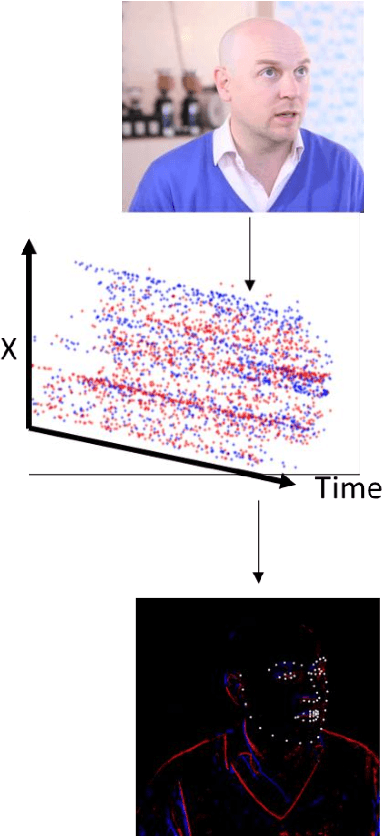
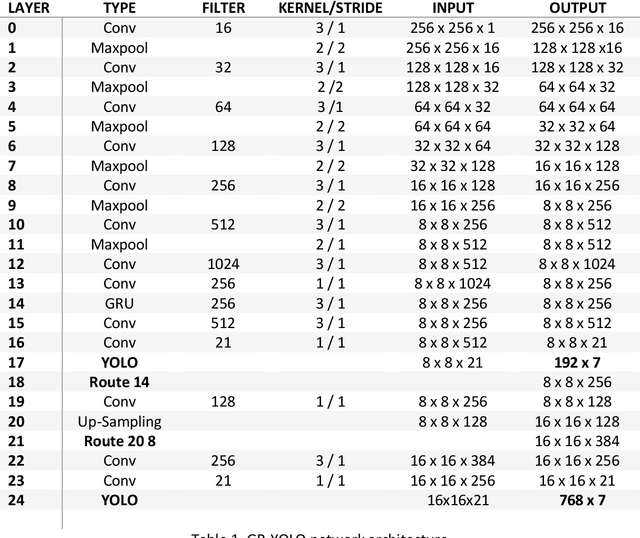
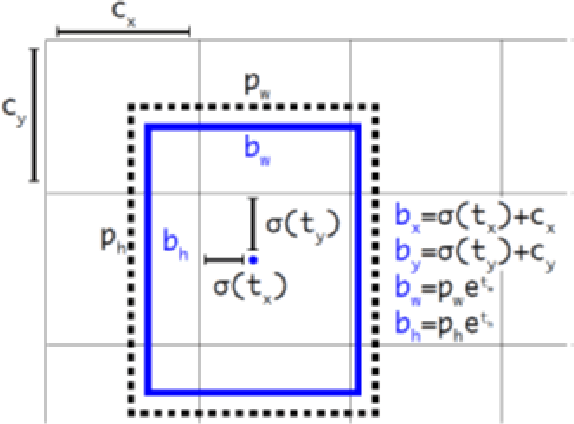

Abstract:Event cameras contain emerging, neuromorphic vision sensors that capture local light intensity changes at each pixel, generating a stream of asynchronous events. This way of acquiring visual information constitutes a departure from traditional frame based cameras and offers several significant advantages: low energy consumption, high temporal resolution, high dynamic range and low latency. Driver monitoring systems (DMS) are in-cabin safety systems designed to sense and understand a drivers physical and cognitive state. Event cameras are particularly suited to DMS due to their inherent advantages. This paper proposes a novel method to simultaneously detect and track faces and eyes for driver monitoring. A unique, fully convolutional recurrent neural network architecture is presented. To train this network, a synthetic event-based dataset is simulated with accurate bounding box annotations, called Neuromorphic HELEN. Additionally, a method to detect and analyse drivers eye blinks is proposed, exploiting the high temporal resolution of event cameras. Behaviour of blinking provides greater insights into a driver level of fatigue or drowsiness. We show that blinks have a unique temporal signature that can be better captured by event cameras.
 Add to Chrome
Add to Chrome Add to Firefox
Add to Firefox Add to Edge
Add to Edge